Are you aware of Green Bugs that Look Like Leaves? These are nature’s disguise artists and might surprise you with their looks!
Green Bugs that Look Like Leaves – These are not characters from a science fiction story but real-life insects that mimic leaves so impeccably you might just overlook them while admiring your garden. Let’s learn more about these marvels of natural camouflage!
Green Bugs that Look Like Leaves
1. Mantis

Scientific Name: Mantis religiosa
Are they beneficial for gardens? Yes
Some species of praying mantis are known for their leaf-like appearance, with flattened, green bodies and wing patterns that imitate leaf veins.
This allows them to blend seamlessly into foliage, escaping the attention of predators and aiding in ambush hunting.
2. Treehoppers
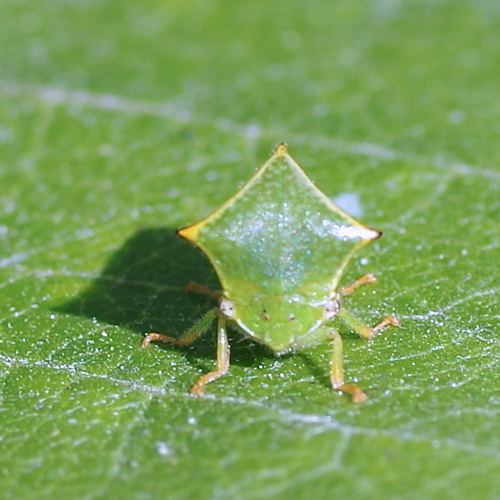
Scientific Name: Membracidae
Are they beneficial for gardens? No
Treehoppers have pronotums (the first segment of the thorax) that can resemble thorns, leaves, or even plant buds. The leaf-like pronotums allow them to blend in with the plant material they are feeding on.
3. Leaf-Wing Bugs
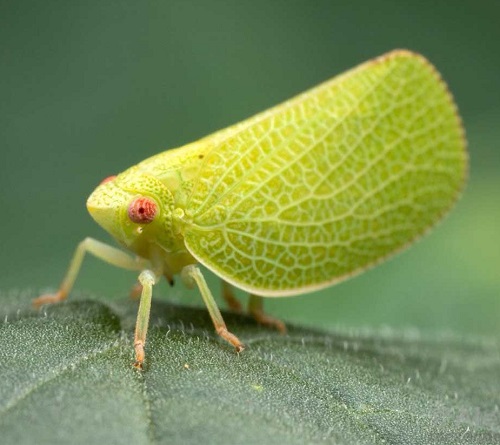
Scientific Name: Coreidae
Are they beneficial for gardens? No
This leaf-looking bug fools the predators with its shape and color, which look exactly like a leaf.
4. Leaf-Mimic Katydids
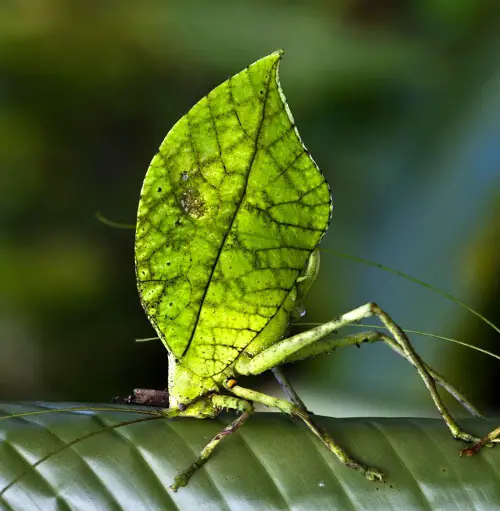
Scientific Name: Microcentrum rhombifolium
Are they beneficial for gardens? No
Not only do Katydids have green-colored wings, but they also have intricate patterns on them that mimics the veins of the leaf, which makes it hard to distinguish.
Check Tiny Bugs in House Near Windows
5. Leaf Grasshopper
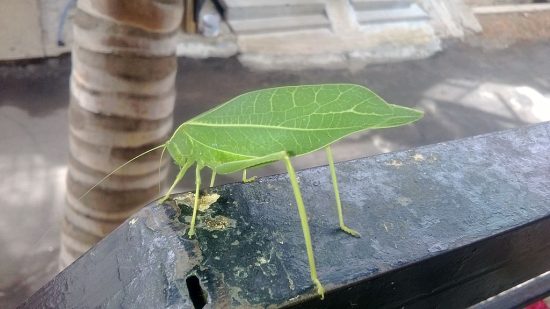
Scientific Name: Phyllochoreia ramakrishnai
Are they beneficial for gardens: No
Leaf Grasshopper is another green bug that can confuse you with a leaf. The veins on its wings are a sign of perfection.
6. Leaf Insect
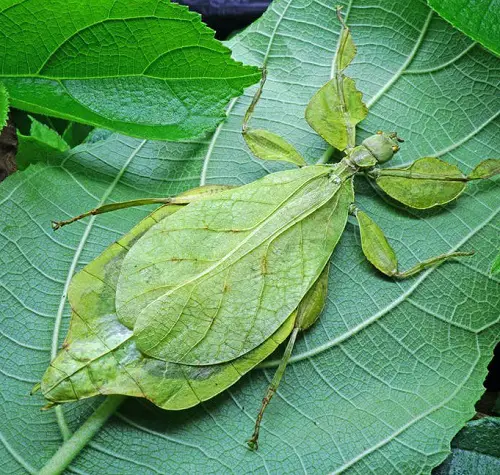
Scientific Name: Phylliidae
Are they beneficial for gardens? No
Also known as “walking leaves,” these are perhaps the most famous leaf mimics. They have flat, veined bodies and move in a way that resembles a leaf swaying in the wind.
7. Stick Insect
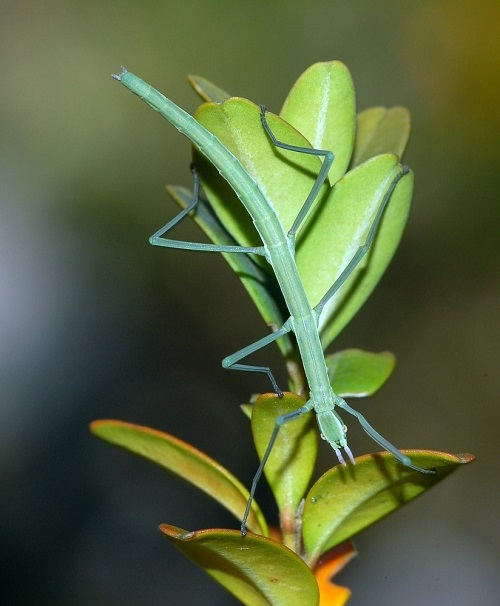
Scientific Name: Phasmatodea
Are they beneficial for gardens? No
Also known as stick insects, some Phasmid species have evolved to more closely resemble leaves than sticks, with broad, flattened bodies and a leaf-like appearance.
8. Leafhoppers

Scientific Name: Cicadellidae
Are they beneficial for gardens? No
These small insects often have a wedge-shaped body that can resemble a leaf or leaf bud. Their green or brown coloring also adds to the resemblance, providing a form of camouflage.
9. Katydid nymphs
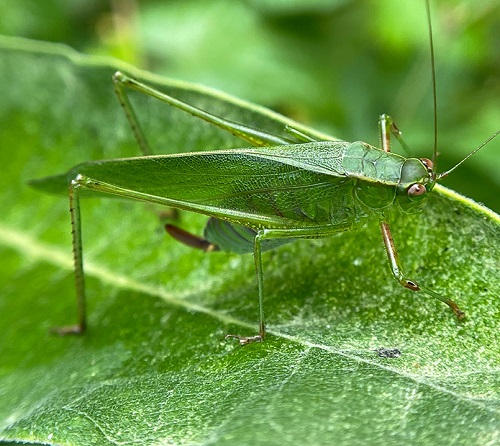
Scientific Name: Pterophylla camellifolia
Are they beneficial for gardens? No
In their early life stages, katydid nymphs often have a form and coloration similar to leaves, which allows these green bugs that look like leaves to hide effectively from predators.
10. Bush Cricket

Scientific Name: Tettigoniidae viridissima
Are they beneficial for gardens? No
These are different from Leaf-Mimic Katydids and are generally larger. They often mimic entire leaves, right down to simulated damage spots and browning edges, making them indistinguishable from real leaves.
11. Alderflies
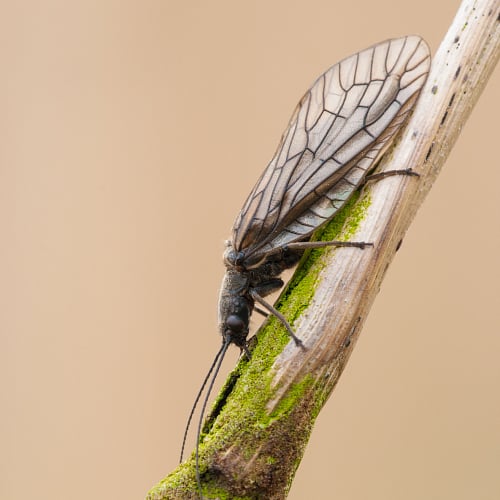
Scientific Name: Sialidae
Are they beneficial for gardens? No
One of the more leaf-like features of alderflies is the intricate venation in their wings, which can mimic the veins seen in leaves. This veining, combined with the wing’s coloration, can create an appearance similar to that of a dead leaf, especially when the alderfly is at rest.
12. False Katydid
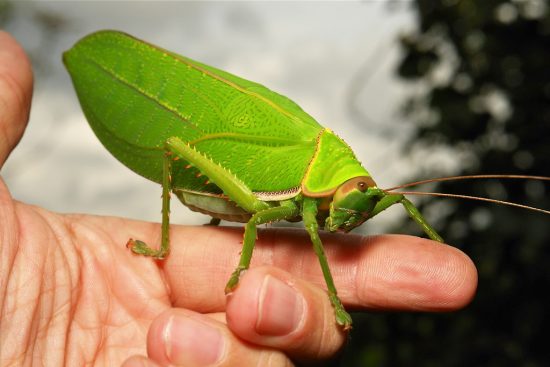
Scientific Name: Scudderia spp.
Are they beneficial for gardens? No
The most stunning feature is their wings, which not only share the color of leaves but often also mimic the intricate vein patterns. Some even display simulated ‘damage,’ like holes or irregular edges, further enhancing their resemblance to genuine leaves.
Note: While some of the insects on the list, such as mantises, can be considered beneficial for gardens due to their predatory nature (they eat other insects), the majority of the insects mentioned are not typically considered beneficial for gardens. In fact, some, like leafhoppers and certain katydids, can be pests for plants.


